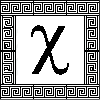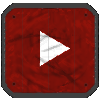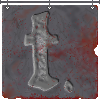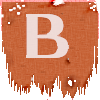This article was written by the god
Shadowfax,
and posted on June 1, 2012.
It was last updated October 10, 2012.
BACK - Alter Aeon Article Index
It was last updated October 10, 2012.
Using the In-game Text Editor
Alter Aeon's in-game text editor is used in many places throughout the game, from
posting messages to writing descriptions to scripting aliases. Learning to
use the text editor will help you to have a more enjoyable experience
while playing on the game.
Where the text editor is used
Here are some places where the text editor is typically used:
There are also clan longs, channel disclaimers, trade object descriptions, and many more places where the in-game editor is used.
- Character description, personality or history - Players can write their own
stories about their characters using the 'set'
command followed by the option they wish to change, such as 'set description'. Note
that by default, using any text command will override
any previous text.
- Bulletin boards - One can post a message on a bulletin board using the
'write board' command.
- Mudmail - To send a mudmail, type
'mudmail send [name or message]'.
- Aliases - These are written and edited using the in-game text editor.
There are also clan longs, channel disclaimers, trade object descriptions, and many more places where the in-game editor is used.
Instructions
The process begins in edit mode. It will begin by displaying the message:
While in the edit menu, you will be presented with a command prompt that looks like this:
After the 'copy,', 'cut', 'delete', and 'paste' commands, a message will inform you how many lines were effected.
If you need to review the edit menu options, use the 'help' command.
Enter description. Terminate with '@'.
Below, a command prompt displaying a right bracket (]) will appear,
and you can start typing what you want to write. Pressing enter or using a
semicolon (;) will advance the editor to the next line. When you are finished,
use the "at sign" (@) to leave edit mode. You will then enter into
the edit menu.While in the edit menu, you will be presented with a command prompt that looks like this:
edit>
Here is a list of edit menu options:- look - Use 'look' to review your text.
- format [options] - The format option with no arguments will format the text to
78 columns. One can override the default width (78 columms) by typing a number after the
command. A trick to making your text easier to edit is to change the column
width to something smaller so as to make the lines more manageable,
such as 20 or 30. It is also possible to format sections of a description by specifying a
start and end line after the format command: 'format <start> <end>' and optionally with
a column width if desired.
A good habit to get into is to always use the format command before exiting the edit menu. In order to prevent all of the text from being crammed into one continuous block, remember to seperate paragraphs with blank lines.
- show - This option displays your text with line numbers, making it easier
to use the next several commands.
- append <line number> - This lets you re-enter edit mode, beginning on the line
after the line number in the command. To start editing at the beginning, use
line 0.
- change <line number> <new text> - This command replaces the text on a particular
line with the new text.
- copy <line number> [end] - With this option, the text from the line is copied to the
buffer. Optionally, you may specify an end line number, which will copy all lines from the first line number to end.
- cut <line number> [end] - This option copies text from the line to the buffer and
leaves an empty line in the description.
- delete <line number> [end] - This erases the line's text and removes the line from
that description.
- paste <line number> - Pasting will copy the text from the buffer to the
line number, overwriting any text that might have been there.
- break <line number> - This command divides the line into sentences, placing one
sentence on each line after the first line number. The ends of sentences are recognized by terminating punctuation, such
as a period (.), question mark (?) or exclamation point (!). If any single
sentence is longer than than the column width, it continues to the next
line.
- parse - This allows you parse commands normally, such as moving, fighting or
casting spells. The only thing you cannot do is use another text command. A
shortcut for this option is the backslash (/).
- done, exit, stop. @ - Exits the edit menu, finalizing your text.
- abandon - Exits the edit menu, deleting all text. Board messages are not posted, and mudmails are not sent. If you were editing an existing description, no changes will be made.
After the 'copy,', 'cut', 'delete', and 'paste' commands, a message will inform you how many lines were effected.
If you need to review the edit menu options, use the 'help' command.
Editing and deleting existing descriptions
If you wish to modify the text instead of overwriting
it, add the 'edit' switch to the end of the command, such as
'set personality edit'. (The edit switch works with some other commands, too.)
In addition, if you wish to delete a character description, personality or history, one can add the special 'null' at the end of the command, such as 'set history null'. (Like the edit switch, the null switch can be used with other commands, as well.)
In addition, if you wish to delete a character description, personality or history, one can add the special 'null' at the end of the command, such as 'set history null'. (Like the edit switch, the null switch can be used with other commands, as well.)
Noedit mode
There's also a "noedit" mode which will drop you directly out of edit mode, bypassing
the edit menu when you hit '@'. It is toggleable by typing
'noedit'.
To edit in that mode, you have to use the '/' commands, which are largely the same.
BACK - Alter Aeon Article Index










